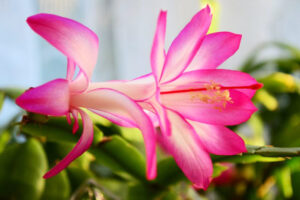Annuals offer vibrant colors, unique shapes, and continuous blooms throughout the growing season. Let’s dig into some of the best low-maintenance annual flowers, ensuring your garden flourishes with ease!
Ageratum

Ageratum, commonly known as floss flower, is a charming addition to any garden. Its fluffy blooms come in captivating shades of blue, purple, pink, and white, making it a vivid statement for borders or container gardens. Ageratum thrives in full sun to partial shade and adapts well to various soil types, as long as it’s well-draining. The plants typically reach heights of about 6 to 12 inches, providing a neat, compact presence.
Ageratum blooms from late spring until frost, offering months of enjoyment. To care for these flowers, simply water them regularly, ensuring they don’t become waterlogged. Occasionally, you may want to provide a light application of fertilizer during the growing season to boost their color and vigor. Deadheading spent blooms encourages further flowering, leading to a bountiful display of blossoms. Additionally, ageratum is deer resistant and generally pest-free, making it an ideal choice for low-maintenance gardens.
Calendula
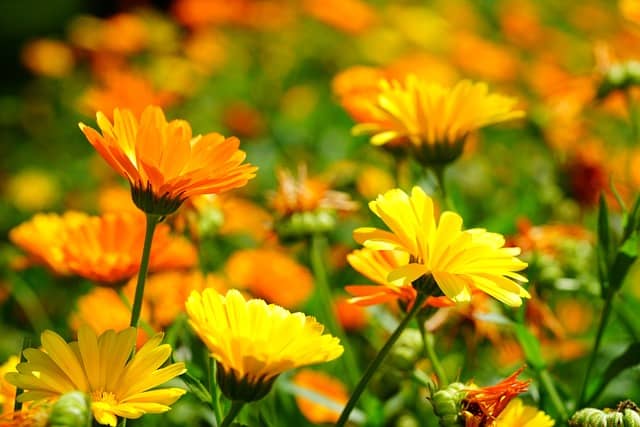
Calendula, often called pot marigold, is a fantastic choice for low-maintenance gardening. Its vibrant orange and yellow blooms bring warmth and cheer to any landscape. This hardy annual is one of the first to bloom in spring and can also endure the cooler temperatures of fall, making it versatile for various planting schedules. Calendula’s resilience allows it to thrive in poor soil conditions, and once established, it is fairly drought tolerant.
Another benefit of calendula is its ability to attract beneficial insects, such as ladybugs and lacewings, which prey on common garden pests. To keep these cheerful flowers blooming, a regular deadheading of old flowers is beneficial; this practice promotes more blooms throughout the season. Plus, you can enjoy the beautiful blossoms in your kitchen, as they’re edible and often appear in salads, liquors, and herbal remedies. The joyful palette and ease of care make calendula a must-have in any low-maintenance garden.
Cornflower
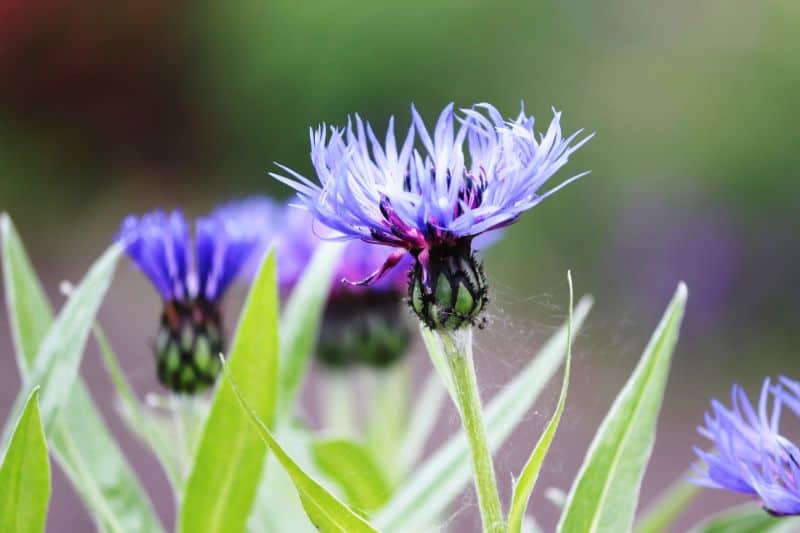
Cornflowers, also known as bachelor’s buttons, bring a touch of wildflower charm to your garden. Known for their striking blue, purple, and pink blooms, they thrive in full sun and can tolerate various soil types, although they prefer well-drained areas. An added bonus is their self-seeding nature, allowing cornflowers to return year after year with minimal effort from you.
These hardy flowers typically grow between 1 to 3 feet tall and make excellent cut flowers, adding a lovely touch to floral arrangements. They bloom in late spring and continue throughout summer, drawing pollinators like bees and butterflies into your garden. Cornflowers require very little water, making them suitable for drought-prone gardens. To maximize their beauty, practice light deadheading throughout the season to encourage prolonged blooming. Cornflowers’ natural beauty demands little attention, proving they are a low-maintenance gardener’s dream.
Dianthus

Dianthus, known as pinks or gay feather, are charming low-maintenance annuals famed for their fragrant flowers. With a diverse color palette that includes vivid reds, soft pinks, and vibrant whites, dianthus adds delightful visual interest to any garden. They thrive best in full sun, flourishing in well-drained soil. Under ideal conditions, they tend to grow between 12 to 18 inches in height, making them perfect for borders, containers, or as ground cover.
One of the most attractive features of dianthus is its drought resistance. After establishing their roots, these flowers require minimal watering, adding to their low-maintenance allure. Frequent deadheading encourages new blooms, which can last from early spring until fall. Additionally, with their clove-like scent, fresh-cut dianthus flowers can enhance your home’s interior decor. The combination of fragrance, color, and ease of care makes dianthus a wonderful addition to your outdoor oasis.
Feverfew
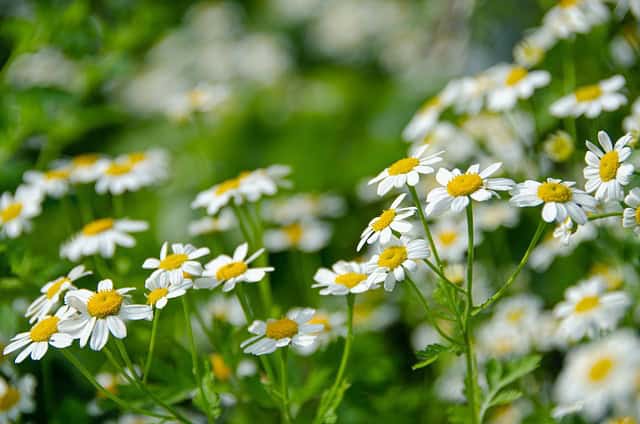
Feverfew is a charming, fragrant annual known for its daisy-like white flowers with sunny yellow centers. Often seen in traditional gardens, feverfew thrives in full sun to partial shade and prefers well-drained soil. Its low growth habit makes it excellent for filling in gaps between taller plants and adding texture to meadows or informal borders.
One of the notable aspects of feverfew is its resilience in various growing conditions. It can tolerate poor soil and moderate drought, offering a robust option for low-maintenance gardening. This hardy plant draws beneficial insects, enhancing the ecological balance of your garden. The flowers bloom in summer and can last until the first frost, providing continuous color and fragrance throughout the growing season. Occasional trimming helps maintain its form, but generally, feverfew requires little more than standard watering. Plus, the herb is commonly used in traditional herbal remedies, making it functional as well as beautiful.
Larkspur
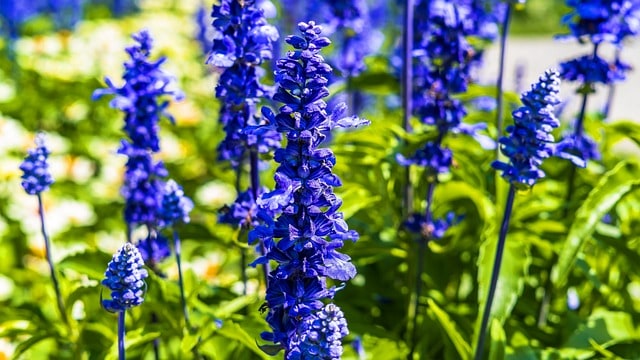
Larkspur adds a striking vertical element to gardens with its tall spikes of delicate flowers, available in shades of blue, pink, and white. These beautiful annuals thrive in full sun, enjoying well-drained soil rich in organic matter. Larkspur can grow anywhere from 1 to 5 feet tall, depending on the variety, making them a perfect choice for backgrounds or as focal points in flower beds.
Larkspurs are also relatively pest-resistant, which further reduces the maintenance required. These charming plants bloom in late spring to early summer and will continue to produce flowers throughout the season with proper care. Watering regularly helps maintain their health, but they can tolerate some dryness. Occasional deadheading helps to prolong the blooming season and maintains a tidy appearance. Not only do larkspurs create a lively visual display, but they are also a favorite among bees and butterflies, enhancing your garden’s ecosystem.
Marigold
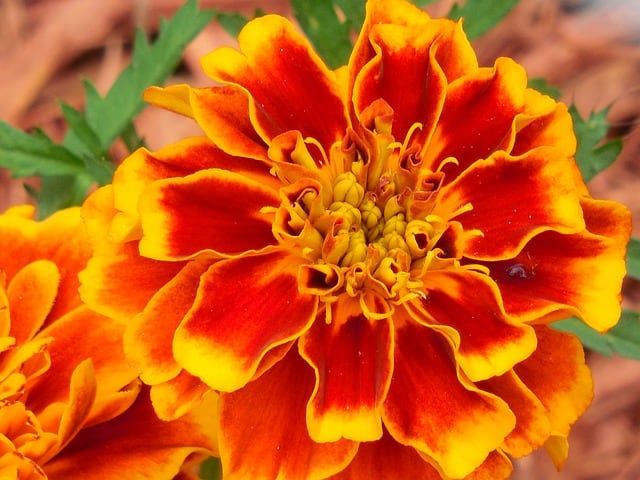
Marigolds are favored among gardeners for their bold, bright colors and easy care. With hues ranging from golden yellow to fiery orange and even deep red, marigolds add a spectacular pop of color to any garden space. They flourish in full sun, thriving in a variety of soil types without requiring excessive fertilizing. One of the standout features of marigolds is their vigorous growth; they typically bloom from late spring until frost.
Once established, marigolds are remarkably drought tolerant, though they benefit from regular watering during prolonged dry spells. They are also renowned for their ability to deter pests; the strong scent of marigolds has been known to repel aphids, nematodes, and even rabbits. Simply deadhead spent flowers to encourage further blooms and maintain their vibrant appearance. With minimal care required, marigolds are perfect for newcomers to gardening or those looking for a colorful addition to their low-maintenance garden.
Pansy
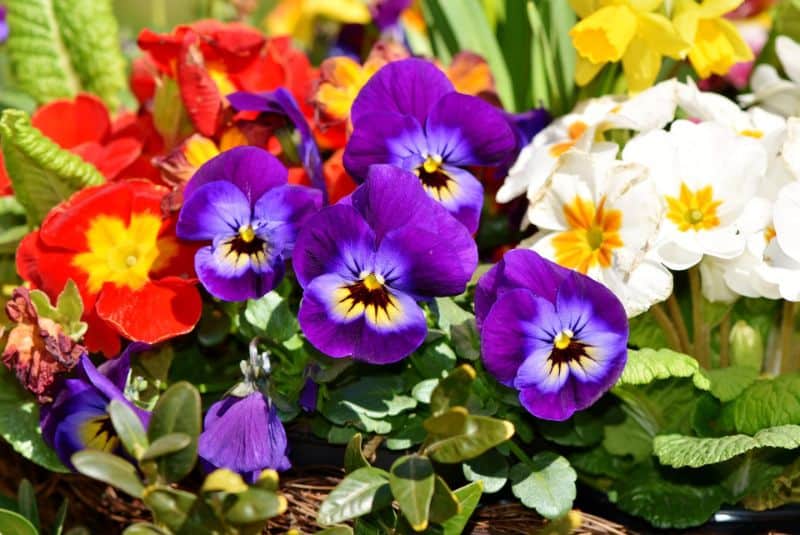
Pansies are versatile annuals known for their array of vibrant colors and sweet fragrances. Available in nearly every color imaginable, they can be seen in delightful combinations suitable for any aesthetic. Ideal for cooler climates, pansies bloom in early spring, providing cheerful color when other plants may still be dormant. They thrive best in well-draining soil and full sun to partial shade.
Pansies are also known for their cold tolerance, which allows them to last well into the fall. Watering once a week suffices, though they benefit from more frequent watering during hot weather. To maintain robust growth, you may need to deadhead faded blooms, encouraging new buds to form. They are also versatile enough to serve as border plants, container fillers, or even in hanging baskets. The airiness of their petals and their exquisite colors makes them perfect for lifting the spirit and brightening any space, both indoors and outdoors.
Petunias
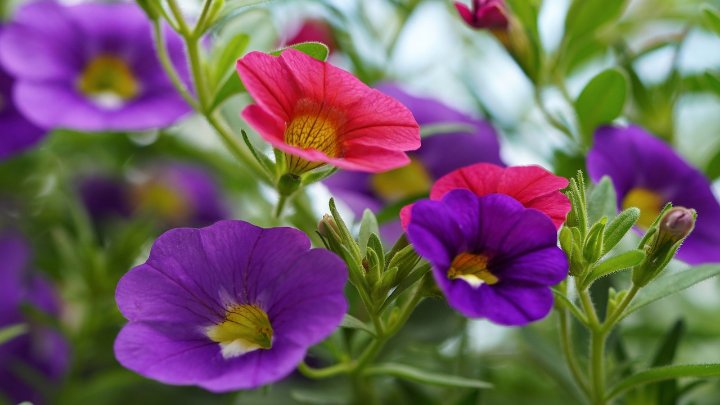
Petunias are beloved annuals renowned for their abundant and vibrant flower displays. Available in various colors, including white, pink, purple, and blue, petunias light up gardens, hanging baskets, and window boxes. They thrive in full sun and prefer well-drained soil, yet they can adapt remarkably well to different growing conditions. These annuals can grow upright or trail, depending on the variety you choose, adding versatility to your gardening plans.
Once established, petunias exhibit resilience to drought, needing minimal care. Regular deadheading helps to encourage continual blooms, contributing to their long-lasting beauty. Additionally, petunias are often regarded for their ability to tolerate temperature fluctuations, making them a great fit for variable climates. Their fragrant flowers attract beneficial pollinators like bees and butterflies, enriching your garden ecosystem. Given their stunning displays and easy upkeep, petunias are sure to make a colorful and enduring addition to any low-maintenance garden.
Scabiosa

Scabiosa, commonly known as pincushion flowers, are unique with their tufted blooms resembling pincushions and are available in shades of purple, blue, and white. They bring a refined elegance to gardens, typically growing between 1 to 2 feet tall. Scabiosa flourishes in full sun and does best in well-drained soil, showcasing resilience and flexibility in varying conditions, including poor soils.
These annuals are favored for attracting butterflies and other pollinators, facilitating a vibrant ecosystem in your garden. Scabiosa blooms from early summer until frost and requires minimal water once established. For optimal growth, a light deadheading encourages several waves of blooms throughout the season. Whether planted in borders or as part of mixed beds, scabiosa’s unique shape and occupation of space make them an eye-catching option for the low-maintenance gardener.
Snapdragon
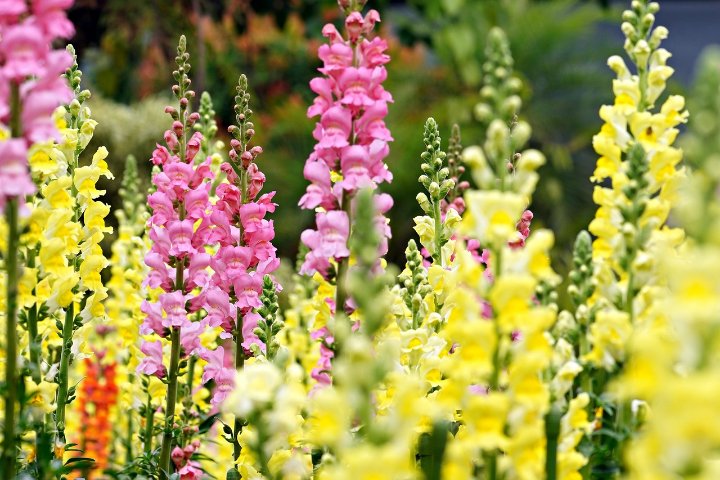
Snapdragons are classic annuals that present a unique, whimsical shape and delightful flowers. Commonly found in colors ranging from soft pastels to bold brights, they add height and elegance to any arrangement. Snapdragons thrive in full sun and prefer cooler temperatures, making them perfect for planting in early spring or late summer for fall blooms.
These charming plants grow anywhere from 6 inches to 4 feet high, depending on the variety, making them suitable for various garden styles. Their flowers are perfect for cutting, allowing for tremendous versatility in floral arrangements. Snapdragons are also known for attracting hummingbirds and beneficial insects, providing substantial ecological support. With regular watering, particularly during dry spells, and occasional deadheading to maintain appearances, snapdragons can contribute to an easy-care garden landscape filled with romance and allure.
Stock
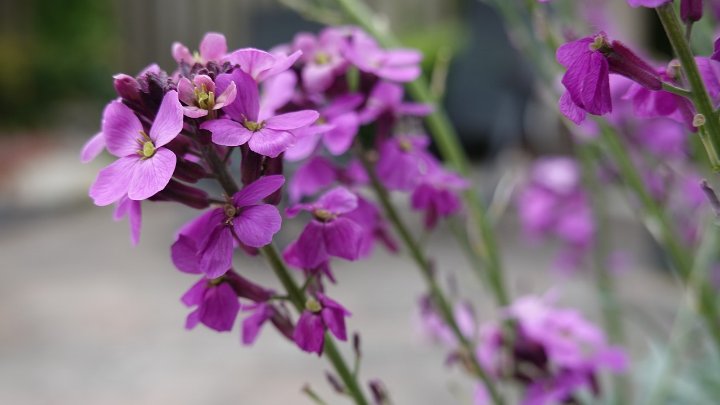
Stock flowers are another delightfully fragrant addition to a low-maintenance garden, known for their beautiful clusters of blooms in an array of colors including pink, purple, and white. These tall, elegant plants can grow from 12 to 30 inches high and thrive in cooler weather, blooming best in early spring and fall. Stock prefers full sun to partial shade and rich, well-drained soil, so when planting, consider boosting the soil with organic compost.
The delightful scent of stock makes it a favorite for floral arrangements, adding a touch of elegance to bouquets. These flowers attract pollinators, enhancing your garden’s health while requiring minimal attention. Watering during prolonged dry spells ensures their success, although stock is quite drought-tolerant once established. Deadheading spent blooms prolongs the flowering season, allowing for a profusion of flowers to fill your garden with fragrance and color. Their overall easy care and stunning presence make stock a key player in any low-maintenance garden.
Sunflower

Sunflowers are iconic annuals well-loved for their towering stature and large, cheerful blooms. While often associated with summer, many varieties of sunflowers are actually considered annuals that reproduce each year from seeds. These sun-loving plants thrive in full sun and well-drained soil and can grow anywhere from a couple of feet to an impressive 12 feet tall, depending on the variety.
Once established, sunflowers are remarkably resilient and drought-tolerant, requiring only occasional watering. Planting these giants not only provides stunning visual appeal but also attracts bees and other beneficial pollinators, supporting your garden’s ecosystem. Their bright yellow petals and charming faces bring joy to both gardeners and visitors alike. Sunflowers are also herbaceous—they gently fold up their petals at night and follow the sun throughout the day, a behavior known as heliotropism. This fascinating trait only adds to their appeal. For a garden that requires little maintenance yet delivers significant beauty, look no further than these impressive blooms.
Sweet Alyssum

Sweet alyssum is a delightful annual flower often overlooked yet immensely easy to grow. With delicate trailing plants adorned in tiny white, purple, or yellow blooms, sweet alyssum creates a lovely cascading effect, making them perfect for containers or hanging baskets. They thrive in full sun to partial shade and adapt well to a wide range of soil types, preferring those that are well-drained.
Sweet alyssum is particularly beneficial in pollinator gardens, as its sweet fragrance attracts bees, butterflies, and other beneficial insects. Once established, these plants tolerate drought, making watering every couple of weeks sufficient. Deadheading spent blooms is encouraged to promote ongoing flowering throughout the summer. With their lovely scent, attractive blooms, and ability to flourish with minimal effort, sweet alyssum offers an excellent solution for any low-maintenance garden.
Sweet Pea
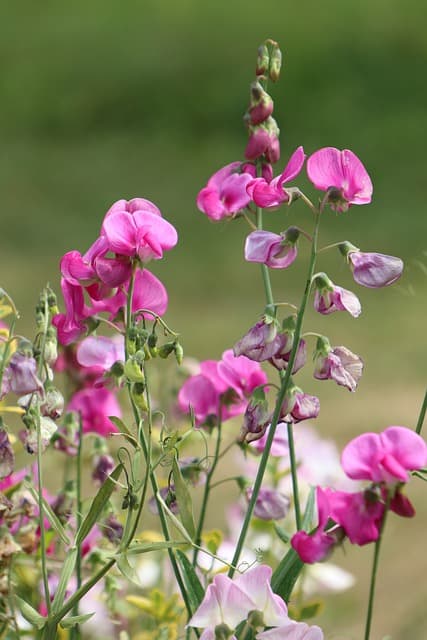
Sweet peas showcase not just stunning beauty but also delightful fragrance, making them a gardener’s delight. With colors ranging from soft pastels to bold hues, these climbing plants can be trained on trellises, fences, or in containers, adding vertical interest to your garden landscape. Sweet peas flourish in cooler weather, making them perfect for early spring or fall plantings, and they prefer well-draining soil.
While sweet peas do thrive in well-drained soil, they benefit significantly from consistent moisture and slightly cooler temperatures. Regular watering during dry spells is essential, particularly as they get established. You might find that pruning spent blossoms encourages new growth, thus increasing your flowering period. Enjoying sweet peas in your garden provides an array of options, whether for cut flowers or fragrant blooms that delight your senses. Their charm, combined with a manageable maintenance routine, makes sweet peas a cherished selection for any low-maintenance floral display.




